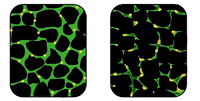
Photo from wikipedia
Muscular dystrophy is a group of progressive genetic diseases affecting the musculature which are characterized by inflammatory infiltrates, necrosis and connective tissue and fat replacement of the affected muscles. Unfortunately,… Click to show full abstract
Muscular dystrophy is a group of progressive genetic diseases affecting the musculature which are characterized by inflammatory infiltrates, necrosis and connective tissue and fat replacement of the affected muscles. Unfortunately, treatments do not exist for the vast majority of muscular dystrophy patients. Adeno-associated viral vector (AAV)-based gene therapy is thus emerging as a potential treatment for many types of muscular dystrophy. Treatments strategies based on AAV are being adapted for replacement of mutant disease-causing genes, knockdown of dominant disease-causing genes using antisense oligonucleotides or inhibitory RNAs, delivery of gene editing tools such as CRISPR/Cas9, and effecting alterations in pre-mRNA splicing and by manipulating expression levels of modifier genes. Translational and clinical trial work focused on these types of AAV treatments for Duchenne muscular dystrophy (DMD), various limb girdle muscular dystrophies (LGMD), myotonic dystrophy 1 (DM1), facioscapulohumeral muscular dystrophy (FSHD), dysferlinopathies, and congenital muscular dystrophies (CMD) are discussed here, with a focus on recent studies, pre-clinical large animal work, and the many promising ongoing and upcoming AAV clinical trials.
Journal Title: Human molecular genetics
Year Published: 2019
Link to full text (if available)
Share on Social Media: Sign Up to like & get
recommendations!